Fig. 37.1
Celution® 800/CRS Device
The Celution® Device automates the extraction and concentration of ADSCs from adipose tissue for immediate re-implantation or reinfusion in a single surgical procedure (Fig. 37.2).
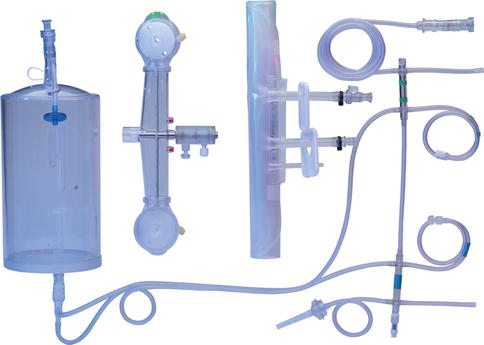

Fig. 37.2
Celution® 800/CRS Device sterile single-use consumable set
37.3.1 Key Features and Benefits
1.
Real-time access to ADSCs enables point-of-care, autologous treatment with clinical-grade cells.
2.
Automated software eliminates user variability during processing and enables a consistently high-quality cell output.
3.
Minimal touch time optimizes clinical workflow by allowing OR staff to focus on other tasks.
4.
Portable device enables use in multiple ORs and non-OR storage.
The process involves injecting the lipoaspirate into a large container at the side of the device (Fig. 37.3). The lipoaspirate is then gently agitated and rinsed with Hartmann’s solution. The automation guides the OR staff through the various steps.
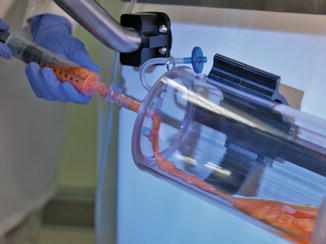

Fig. 37.3
The lipoaspirate is decanted into the sterile chamber
A proprietary enzyme blend (Celase™ Reagent) (Fig. 37.4) is used in conjunction with the Celution® 800/CRS System to extract ADSCs from adipose tissue. Celase™ is a sterile, collagenase-type mammalian-free reagent that allows digestion of the ADSCs from the lipoaspirate.
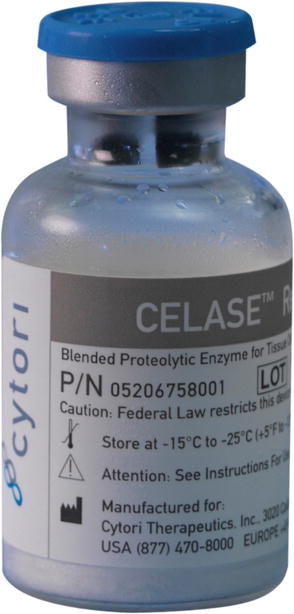

Fig. 37.4
Celase™ Reagent 35 mg
Once digestion has taken place, the lipoaspirate is guided through two chambers in the centrifuge (Fig. 37.5). Once all the lipoaspirate has passed through the system, a small pellet of ADSCs is resuspended and collected (Fig. 37.6). The reconstituted solution is then added to the main graft volume, which is added later, resulting in a cell-enriched graft (Fig. 37.7).
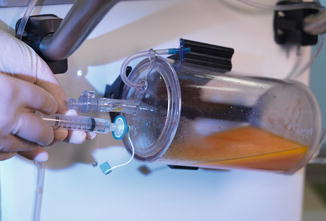
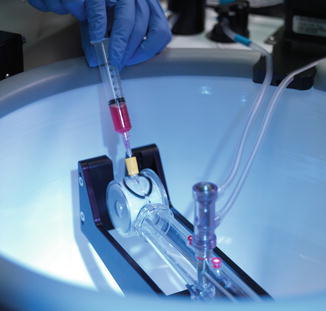
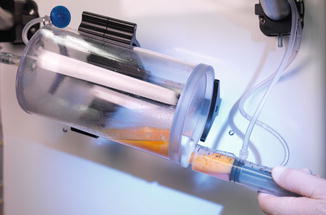

Fig. 37.5
Celase™ Reagent is added to the chamber

Fig. 37.6
ADSCs are resuspended and collected via a syringe to be added to the main chamber

Fig. 37.7
Cell-enriched graft is then extracted and is ready for infiltration
The graft delivery instrument set contains several autoclavable components, which simplify the infiltration step. The lipoaspirate is injected into a PureGraft® bag (Figs. 37.8, 37.9, and 37.10), which allows removal of local anesthetic and other unwanted material such as connective tissue strands and blood. The infiltration of the graft is performed with two Celbrush™ 10 mL delivery devices (Figs. 37.11 and 37.12). This enables precise, microdroplet reinjection with the correct pressure (Fig. 37.13). One unit is used while OR staff prepares the next unit.
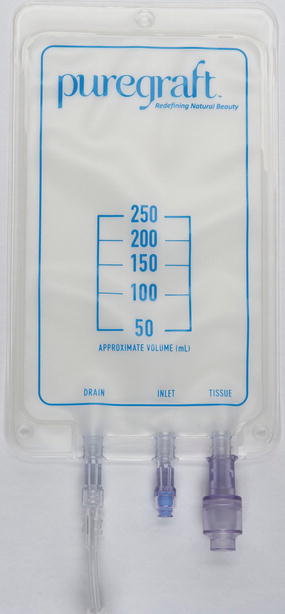
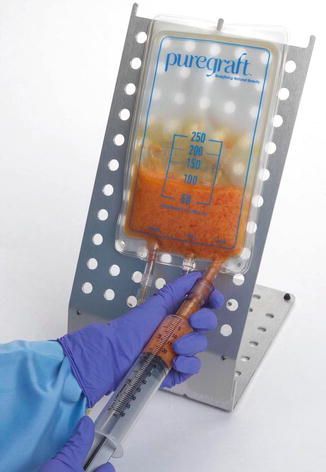
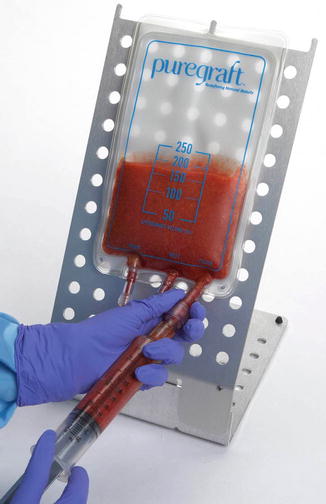

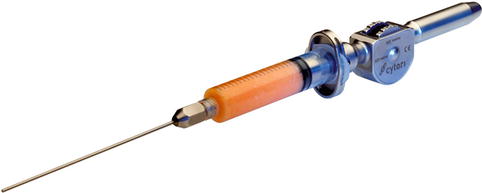


Fig. 37.8
PureGraft® filtering system

Fig. 37.9
Bad fat

Fig. 37.10
Good fat

Fig. 37.11
Extracted fat is transferred to the Celbrush delivery system via suitable connectors

Fig. 37.12
Celbrush delivery system

Fig. 37.13
(Left) Celbrush delivery versus (right) normal syringe lipofilling—consistent microdroplets
Stay updated, free articles. Join our Telegram channel

Full access? Get Clinical Tree








